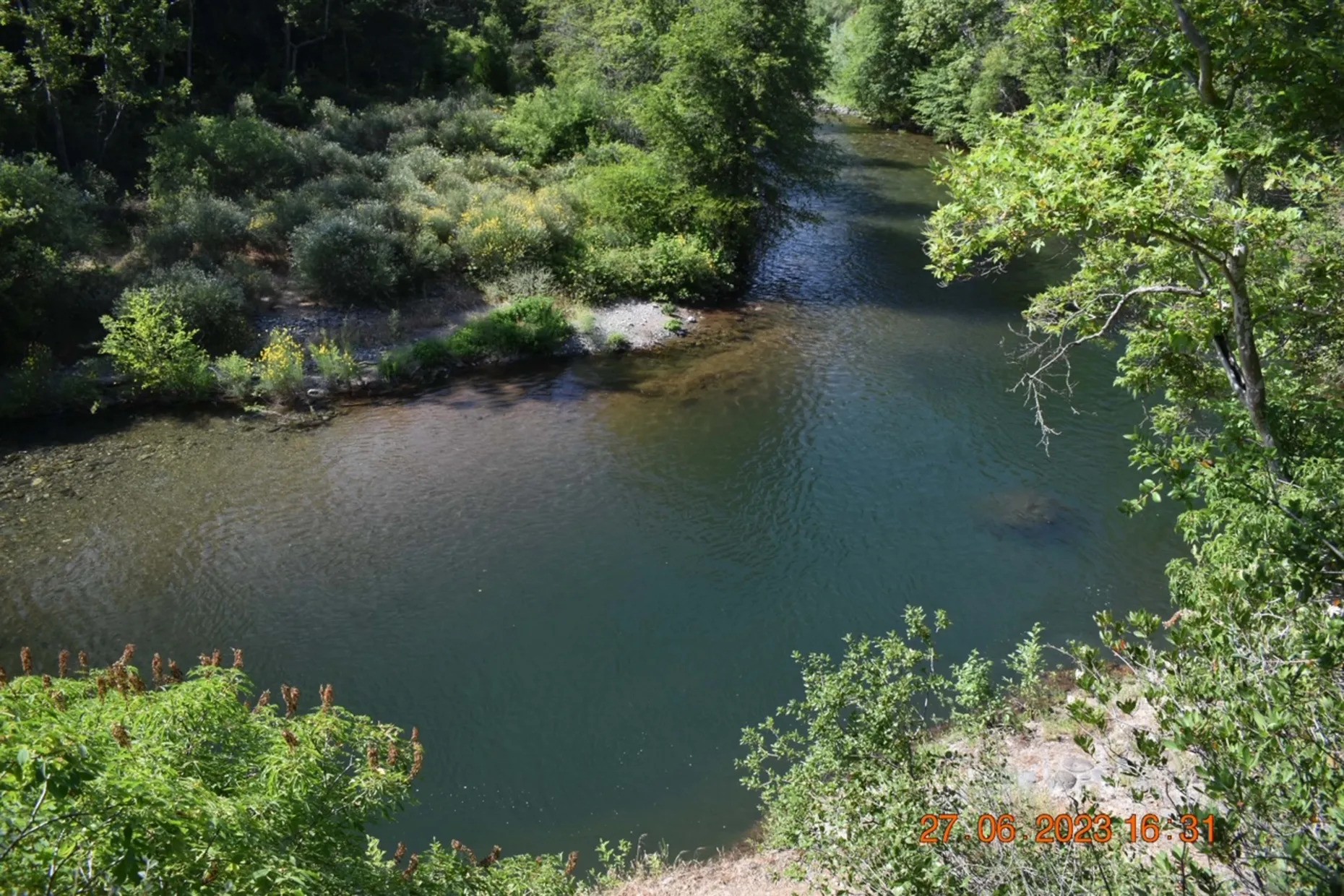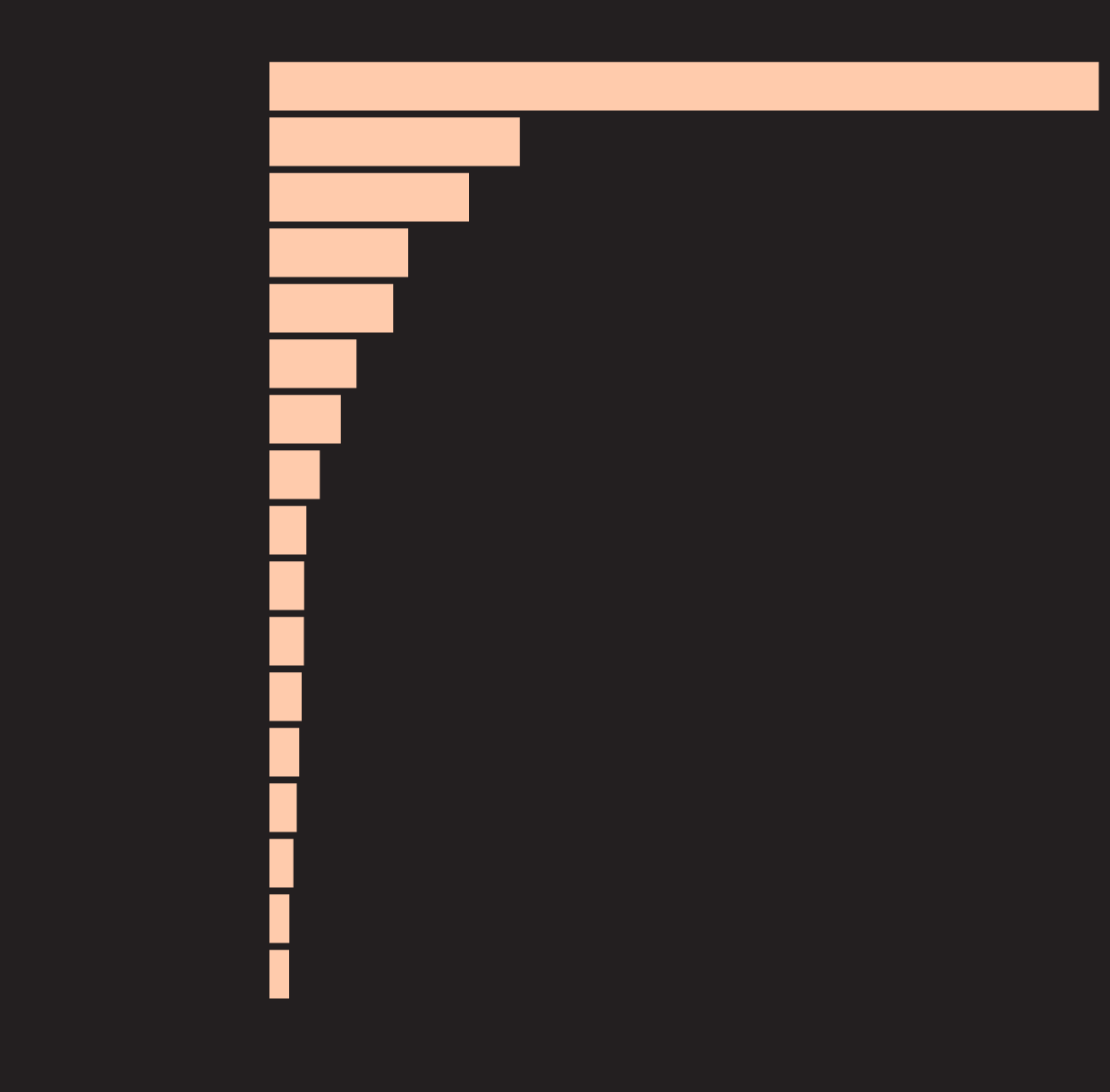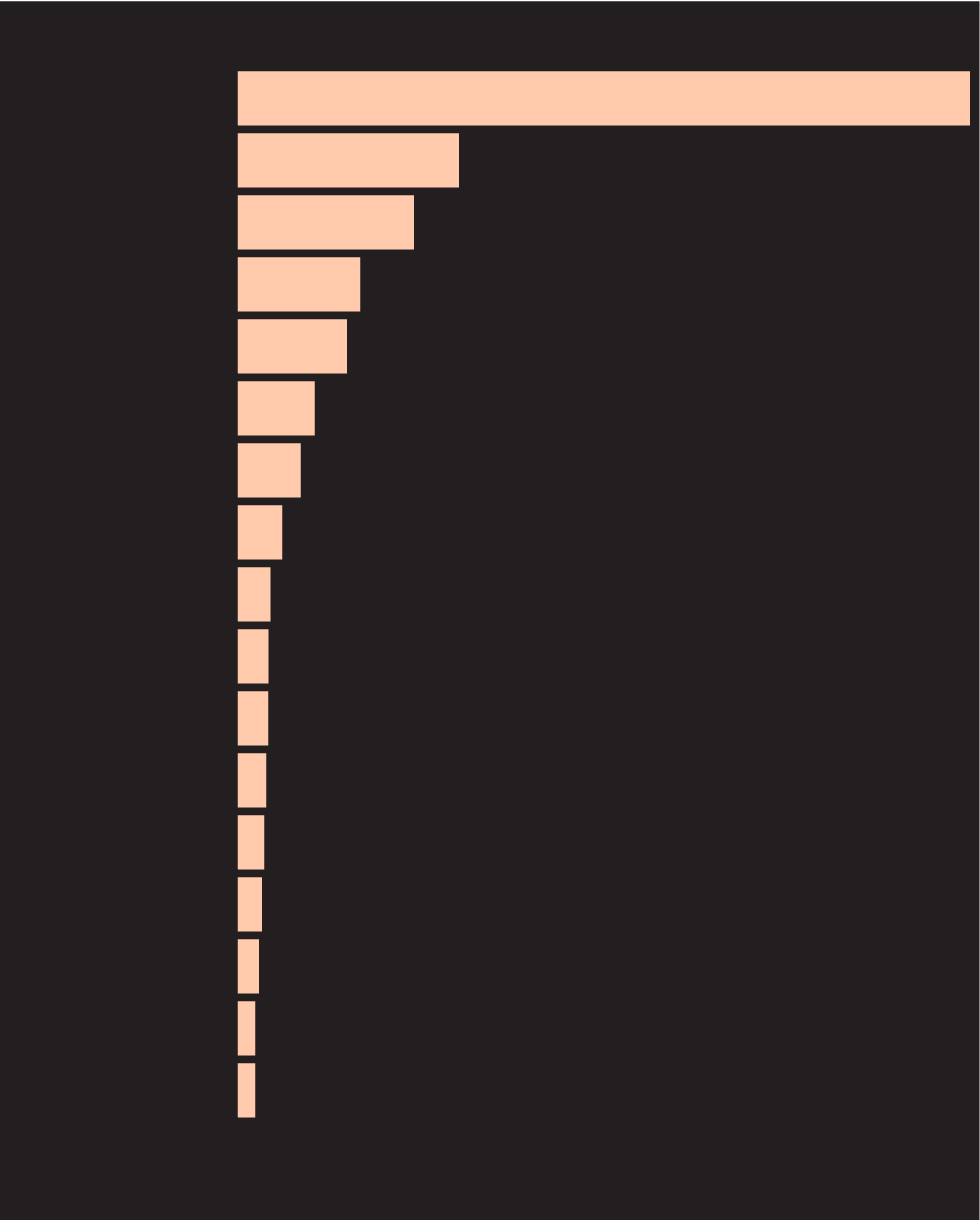A 93-mile-long creek in California’s Central Valley is considered the last hope of the near extinct Chinook salmon. The species is now survived by a mere fraction of its historical abundance, and it faces a number of ongoing and emerging threats to survival. Its small population depends on its historical spawning habitat of Butte Creek, a tributary to the Sacramento River.
But on August 10, 2023, the once-pristine and blue waters of Butte Creek turned brown. A canal burst at a hydroelectric project helmed by PG&E and caused sediment to flood the creek, potentially creating deadly conditions for native fish currently inhabiting the watershed.
PG&E estimates that approximately 3,900 cubic yards of soil was released into Butte Creek from the Butte Canal breach. The material washed downstream resulted in increased turbidity, a measure of the level of particles in a body of water, and turned the creek a dark reddish-brown color.


Move slider to see Butte Creek before and after the canal burst (Photo courtesy: Images by Allen Harthorn)
Although silt is a natural part of a stream, fish and other species can be seriously endangered by excessively high sediment levels, as they are in Butte Creek right now. Sediment fills or obstructs vital habitats, damages fish gills, prevents fish from seeing well enough to move around to feed, and inhibits light, which promotes the growth of algae.
According to the California Department of Fish and Wildlife, Butte Creek is one of only three Central Valley streams that continue to harbor a self-sustaining population of spring-run Chinook salmon.
This species is one of the few that hatch in freshwater, migrate to the ocean to mature, and return to their birth stream to spawn as adults.
As a result, the deteriorating quality of the water body called into question the spawning season in Spring.
2024 Spring run in question
Spring “runs” occur when Salmon travel upstream in the Spring months of March and April in search of warm and still waters where they can spawn.
After the canal breach, many wildlife and fish conservationists worried that the Spring run of 2024 would be failure, and, as a result, devastating to an already endangered species.
The rains in California in December and January, and efforts by PG&E to clean up the sediment did result in an improvement in river turbidity.
But that doesn’t mean the Spring run is saved.
“The sediment has settled everywhere,” said Allen Harthorn, founder of non-profit Friends of Butte Creek. " The sediment has dropped out of the water column and sits on the bed of the creek or in many cases, on the banks of the creek, all over the rocks.”
“It will take, you know, several years of significant rainfall to really clean things up,” he said.
According to The Nature Conservancy, Coho, Chinook, and Steelhead salmon in California may now access over 65% of their former breeding habitat. Many of these populations are in decline and are either categorized as threatened or endangered by the federal government, or they are regarded as species of concern.
In addition to threat from habitat loss, the salmon are also threatened by climate change and water management practices in the state of California. In particular, the hydroelectric projects all over the state build dams and obstruct water bodies. Making it diffcult for salmon to reach their breeding grounds.
PG&E's history of environmental fines
Pacific Gas and Electric Company (PG&E) is not known for its clean track record. As California’s biggest utility, it provides electric and natural gas supply to the populous state.
The company has been awarded fines for many environmental accidents, including the 2021 Dixie fire that was caused when a tree fell on the state's main utility's electrical distribution wires in July 2021, burned more than 963,000 acres in multiple counties.

5B
PG&E Corp.
1.5B
Kinder Morgan
1.2B
NRG Energy
842.1M
Edison International
Between 2000 and 2020, PG&E has paid the most amount of fine of any utility
750M
BC Hydro
528.3M
Consolidated Edison
432M
Williams Companies
304.7M
Vistra Energy
223.5M
DISH Network
210.2M
Charter Communications
208.1M
Duke Energy
195M
Frontier Communications
180.5M
Ameren
165.4M
AT&T
145.2M
EverSource Energy
119.7M
Lumen Technologies
118.7M
T-Mobile US
In US dollars.
Source:
Good Jobs First

5B
PG&E Corp.
1.5B
Kinder Morgan
1.2B
NRG Energy
842.1M
Edison International
Between 2000 and 2020, PG&E has paid the most amount of fine of any utility
750M
BC Hydro
528.3M
Consolidated Edison
432M
Williams Companies
304.7M
Vistra Energy
223.5M
DISH Network
210.2M
Charter Communications
208.1M
Duke Energy
195M
Frontier Communications
180.5M
Ameren
165.4M
AT&T
145.2M
EverSource Energy
119.7M
Lumen Technologies
118.7M
T-Mobile US
In US dollars.
Source:
Good Jobs First

5B
PG&E Corp.
1.5B
Kinder Morgan
1.2B
NRG Energy
842.1M
Edison International
Between 2000 and 2020, PG&E has paid the most amount of fine of any utility
750M
BC Hydro
528.3M
Consolidated Edison
432M
Williams Companies
304.7M
Vistra Energy
223.5M
DISH Network
210.2M
Charter Communications
208.1M
Duke Energy
195M
Frontier Communications
180.5M
Ameren
165.4M
AT&T
145.2M
EverSource Energy
119.7M
Lumen Technologies
118.7M
T-Mobile US
In US dollars.
Source:
Good Jobs First
California leads the way in holding utilities accountable
California has given out the highest amounts of fines in the most number of cases between 2000 and 2020. This could be because of the number of wildfires that the state experiences, stringent laws, and political willpower.
According to Good Jobs First, large fines have been consistently imposed by states like California and New York. The biggest fines these states have levied in the past have been related to equipment malfunctions and service interruptions brought on by severe weather.
Notably, PG&E was fined $1.9 billion by the California Public Utilities Commission for power line maintenance errors that contributed to the start of the wildfires in Northern California in 2017 and 2018.
California fines the most

California
Multistate AG actions
$8B
$2.9B
New York
MO
MA
$9B
$1.9B
$1.7B
IL
WV
$1.6B
$1B
AZ
$1.5B

California
Multistate AG actions
$8B
$2.9B
New York
MO
MA
$9B
$1.9B
$1.7B
IL
WV
$1.6B
$1B
AZ
$1.5B

California
Multistate AG actions
$8B
$2.9B
New York
MO
MA
$9B
$1.9B
$1.7B
IL
WV
$1.6B
$1B
AZ
$1.5B
A community rallies
Butte Creek’s strongest advocates are residents that live in its watershed. Friends of Butte Creek, which Harthorn heads, was formed in 1999 after many of the communities environmental concerns were not heard.
The group has played an active role in the relicensing of the DeSabla-Centerville Project. Members also attend meetings and work with the state and federal agencies to ensure that hydroelectric projects in the are justified and the negative impact to the fish and wildlife of the Butte Creek are minimized.
In this YouTube video, Harthorn explains just how much of a perfect ecosystem is for Chinook salmon and why it is imperative for their survival: